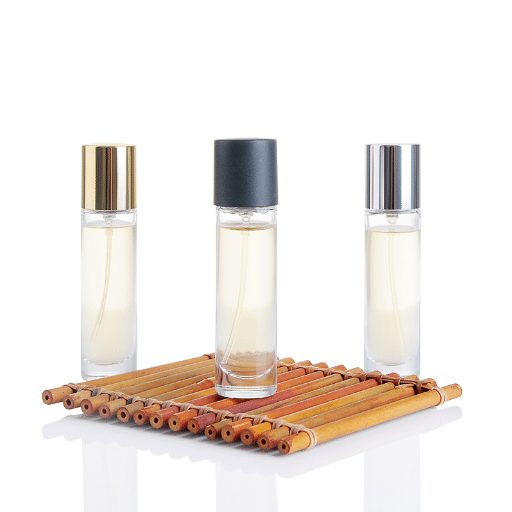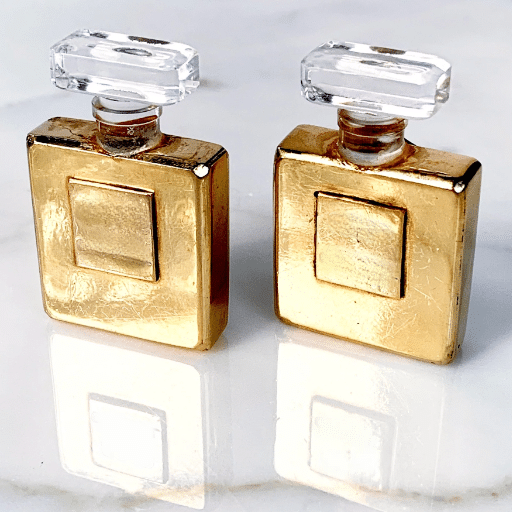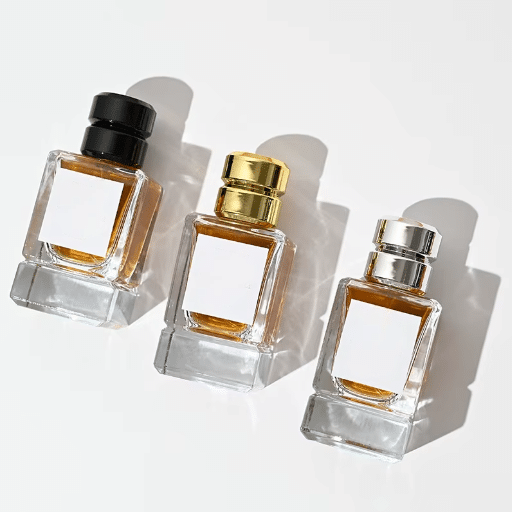The world has long recognized the perfume industry as a luxurious, elegant, and innovative field, but its negative environmental impact has become a major concern in today’s eco-conscious world. Among the primary bottlenecks is the packaging issue—typically intricate, multi-layered, and appealing to customers, but often non-recyclable and resource-intensive. The paper discusses the environmental side effects of conventional perfume packaging and shows the direction the industry is moving toward by adopting greener methods. By switching to biodegradable materials and developing new packaging designs that, besides reducing waste, also cut down on packaging material use, learn about the methods leading the way to a more sustainable future, while still not disregarding the luxury factor.
The Importance of Sustainable Packaging in the Fragrance Industry

The fragrance industry uses glass, plastic, and mixed composites as its basic packaging materials. Glass is a popular choice due to its premium look and recyclability; however, its production requires a lot of energy and emits more greenhouse gases. Plastics, which are mainly used for caps and the topmost layers, are mostly non-recyclable due to the polymer mixture, which makes them harmful to the environment in the long term. Mixed materials like cardboard with plastic inserts or decorative laminates are even more difficult to recycle, generating more waste.
The journey from traditional to sustainable packaging involves a range of measures that specifically address the above challenges. Biodegradable and compostable materials, like plant-based plastics and recycled paper, are increasingly replacing traditional products. Apart from these, the use of refillable perfume bottles is also on the rise, so less packaging is needed for each purchase. Moreover, almost all brands attempt to use only the essentials in their designs, that is, to cut down on material usage. Such steps not only bring down the carbon output but also show that the company stands in good standing with the consumers and they are ready to trust and follow the brand.
Understanding Sustainable Packaging
Sustainable packaging not only helps the environment but also gives several other advantages. The most important of these is the decrease of greenhouse gas emissions by the help of biodegradable, which are less polluting, recycled, and upcycled materials which need less energy for production as compared to virgin. Moreover, the practice of using lighter packaging materials has a very positive effect by indirectly lowering energy consumption, reducing transportation costs, and, in turn, cutting the carbon footprint. There has been a revolution in consumer behavior, which has also been reflected in the investigation results. There have been significant changes in customers’ packaging preferences, with almost 70% expecting brands to take responsibility for their environmental impact. Businesses that adopt sustainable practices and are seen as future- and duty-conscious are the ones that succeed in this way. Besides, it is the law in many markets to use the goods of a certain kind and to adhere to the same pattern for their packaging, which on the one hand would mean the end of a particular kind of product, but on the other hand would create a window of opportunity for new businesses offering sustainable products, the only way the business can exist.
Why Sustainability Matters for Perfume Brands
The perfume industry is gradually reaching a point where sustainability is necessary. Contributing to this motive are shifting customer desires and changing laws. Studies have shown that individuals are increasingly attracted to brands that follow environmentally friendly practices. In other words, for a perfume brand to be part of this trend, it has to create a sustainable product lifecycle, from the beginning, when natural and renewable-source ingredients are required, through to when the product is sold to consumers and ready for use.
Besides, there has been a lot of talk about how conventional practices, such as sourcing rare botanical ingredients and using disposable plastics, are no longer eco-friendly. Today’s consumers are already aware of the ecological profiles of the goods they acquire and are willing to pay more for ethical, sustainable alternatives. Taking responsible environmental measures is not just about strengthening the brand’s image, but also about complying with ever-evolving environmental laws that are becoming stricter in global markets. The perfume brands that put sustainability at the top of their priorities will stay in the business long-term, and not only that, they will also be the answer to the eco-consumers’ demands.
Consumer Trends Towards Eco-Conscious Choices
Recent studies highlight a significant shift in consumers’ priorities, with transparency and sustainability as the main factors shaping their buying decisions. A hover of 75% of consumers, mainly from younger populations like Millennials and Gen Z, are already factoring in the brand’s environmental aspect when deciding to buy. This seems to be a trend particularly affecting the younger generation, which is the key driver of eco-friendly products across different markets. Consumer needs have increasingly reflected the attitudes of people who have become more cautious about their lifestyles, seeking greater sustainability through recycling and other measures, including sourcing and using recycled materials. Companies that practice a profound sustainability culture and, at the same time, communicate their green endeavors clearly are more likely to gain trust and build loyalty among this ever-growing customer population.
Current Environmental Impact of Traditional Perfume Packaging

The packaging of conventional perfumes has a noticeable negative impact on the environment due to the high consumption of materials such as glass, plastic, and metal, and this, in turn, is the main factor responsible for the large carbon footprint of such packaging. The glass containers on display help create an atmosphere of luxury and chic, and the demands placed on the manufactory’s energy system in the form of heat are substantial, requiring large amounts of energy for the process. In addition, the production of containers with mixed-material design—pumps and caps, the majority of which are made of plastic or metal—makes recycling more complicated. It is the use of such designs that eventually leads to a significant portion of packaging waste going to landfills. What is more, the emission of greenhouse gases from the production of these materials and their transportation is another major factor contributing to the worsening of climate change. Cutting down the need for such packaging or changing to recycled and biodegradable materials are the critical steps to alleviate these impacts.
Challenges Faced by the Fragrance Industry
The perfumery sector faces many obstacles; among the main points are eco-friendliness, the need for stricter rules and regulations, and the availability of basic and raw materials. The main trouble is the raw materials used in the industry, including, among others, essential oils and aromatic chemicals, which often come from limited natural resources. The impact of the scarcity of critical ingredients is significantly exacerbated by climate change and the consequent biodiversity loss, which also results in higher production costs, supply chain destabilization, and, ultimately, loss of competitiveness.
Another notable issue is the requirement to comply with strict global laws governing product safety and the environment. A case in point is the REACH (Registration, Evaluation, Authorization, and Restriction of Chemicals) regulations of the European Union, which require that chemicals be used under very strict conditions; hence, it is necessary to change formulations and conduct compliance testing constantly. Business entities need to allocate a large amount of money to research and development to comply with regulations, make their products marketable, and ensure the products are effective.
Shifting consumer tastes adds extra complexity. The eco-conscious and morally aware consumer market demands environmentally friendly, animal-friendly, and transparent products, and the demand for fragrances is increasing. The companies that would consider sustainability alongside profit and product quality by innovating their formulas and packaging would be under the spotlight. The trend above underscores the importance of a strategic sustainability approach, which is, again, a case of innovation.
Waste Generated by Conventional Packaging Solutions
Billions of units of packaging waste in the fragrance industry end up in landfills every year because traditional packaging methods generate a huge amount of solid waste worldwide. The usual material for luxury perfume packaging is a triple-layered structure comprising glass, plastic, and metal. Such a mixture is hard to recycle efficiently, consequently, because the materials are tightly bound and thus non-biodegradable. Luxury fragrances with metallic or plastic components are not recyclable, as glass and metal/plastic do not separate easily during processing. This makes it expensive and time-consuming, and more often than not, the solution is to throw them away.
In addition, one-time-use plastic items, such as spray mechanisms and overcaps, only add to the already significant plastic waste generation, estimated at 300 million tons annually worldwide. According to the latest research on sustainability, less than 10% of the plastic produced has been recycled, and much of it is a major source of pollution in ecosystems, particularly the oceans. This issue is likely to bring more than one environmental problem that is not easy to solve, including microplastic pollution affecting wildlife and people’s health.
In most cases, traditional methods overlook the packaging’s impact on the environment throughout its lifecycle, leading to high consumption of non-renewable resources and considerable carbon emissions from transportation and distribution. Solving this matter requires applying circular economy principles that promote material recovery and reuse, as well as using sustainable, less polluting smart packaging technologies.
Innovative Solutions for Sustainable Perfume Packaging
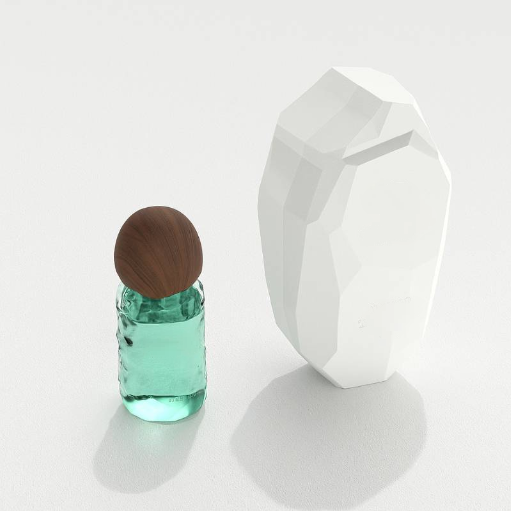
Reusing and recycling are the two best solutions for environmentally friendly perfume packaging. Perfume producers can make a huge difference in reducing packaging waste by adopting longer-lasting materials and a filling system. Refilling stations will become the main source for consumers to get their own fragrance, and via mail-in service, no packaging materials will be required for the new refill. In the long run, this way not only reduces waste but also cuts production and transportation costs. Besides this, new materials such as biodegradable bioplastics and plant-based polymers will be among the major solutions. These materials break down readily in natural conditions, reducing the amount of waste that goes into landfills. For instance, the use of compostable caps or wrappers made from agricultural byproducts provides a complete eco-friendly standard for packaging that is easy to follow and reliable, with no change in functionality or appearance.
Materials That Promote Sustainability
The transformation of the very fabric of production by introducing bio-products, which are highly sustainable materials, has received significant support, and both the above-stated reasons and the growing concerns of environmental authorities have backed this process. Let’s say nanocellulose technology, which is very new to the market as well, has made it possible to produce ultralight, extra-resistant, and biodegradable composites. Plant cellulose, that is how nanocellulose is also called, had a good start while cutting the usage of fossil raw materials in alternation to the previous ones, in particular for packaging and general components.
Moreover, the use of recycled compounds has seen a dramatic boost in both efficiency and volume. An essay shows that consumer plastics can reduce greenhouse gas emissions by up to 79% compared to those made from scratch. The soft-rot fungi, on the other hand, are increasingly chosen for wrapping because they are green, made naturally, and return to the ground after use. The two cases present to the audience that innovation plays a major role in mitigating waste production, and that, at the same time, the very survival of the recycling and waste, etc., relationship is essential for the sustainability of Earth.
Eco-Friendly Packaging in the Fragrance Business
The fragrance industry is changing as well, with luxury brands and craftspeople prioritizing sustainability in packaging. Fresh information raises the popularity of materials such as recycled glass, which is used not only to reduce the need for virgin raw materials but also to cut energy use in production. Some companies have started using eco-friendly inks and adhesives, meaning they have packaging materials designed for the environment.
Another smart move in the field is to offer refillable fragrance bottles, bringing to market the option of refilling one’s favorite scent repeatedly without throwing away the original container. This is the overall packaging waste down and the promotion of the circular economy model. Brands are also experimenting with paper packaging solutions that are partly paper and contain minimal amounts of biopolymer, which are, to an extent, durable and environmentally friendly.
The sustainable reporting points out that these green technology innovations are more than just a pretty face; they are making a significant difference by cutting carbon emissions and reducing landfill waste. The fragrance business is going a step ahead of the competition by responding to consumer demand for openness and redesigning carbon-neutral packaging and lifecycle assessments together to give the brand a competitive edge and address environmental issues. The above practices assert the perfect marriage of luxury and sustainability, allowing the emergence of a new, futuristic epoch where green thinking goes hand in hand with cutting-edge ideas.
Custom Perfume Packaging: A Sustainable Approach
The selection of materials is an essential aspect that determines the sustainability of the design of custom perfume packaging. Many companies are now using non-plastic, non-recyclable materials, such as biodegradable, reusable, or refillable materials, in this case. For example, glass has remained a favorite material because it can be readily recycled and is very durable. Besides, plant-based polymers are being introduced as a new method for producing various plastic grades, including thermoplastics and thermosets. The creative use of paper in the packaging of products, together with the recent development of the technology of making paper boards are steps forward to obtaining a fully recyclable package, hence, these are the solutions that not only lead to dramatic reductions in the carbon footprint but also playing their role in changing the climate and thus making the sustainability movement more powerful and persuasive.
According to the research, the use of environmentally friendly materials has reduced emissions by 30% compared with traditional packaging, aligning with the international agenda to reduce environmental pollution. Besides, the emergence of green innovations, such as lightweight glass and modern designs, not only reduces waste but also makes shipping more convenient, further advancing sustainability goals. By fusing eco-friendly materials and structures, fragrance labels can develop packaging that is not only lovely but also environmentally friendly, helping reduce the slowest possible damage to nature without any collaboration throughout life.
Recycling and Reusing in Fragrance Packaging
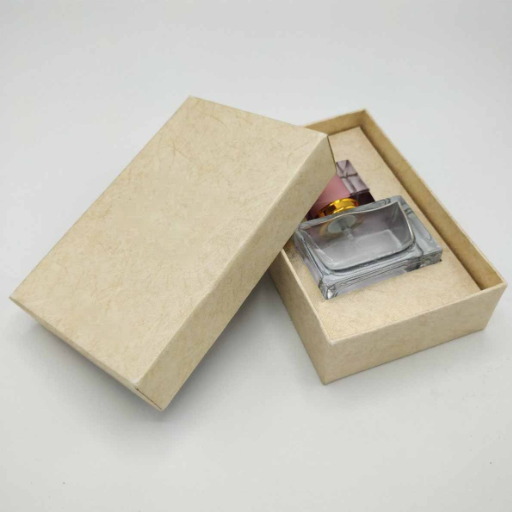
Recycling and reusing perfume container material are the main steps in the waste minimization campaign. As one of the most common materials used for aromatic liquid packaging, glass bottles are straightforward to recycle and can be refilled numerous times without any quality degradation. Many companies are already asking for the empty bottles to be returned to them for proper disposal or refilling. Further, using an empty perfume container for personal use, such as storing small items or using it as a decorative item, is an effective way to prolong the container’s life. In this way, both companies and individuals can help the global economy by reducing waste and using resources more effectively.
Implementing Recycling Programs for Perfume Bottles
The establishment of recycling programs for perfume bottles provides a two-fold benefit, namely the reduction of the ecological impact and the encouragement of sustainable practices in the fragrance industry. One of the latest reports on the sector shows that every year, the world seems to be the final destination for as many as a few million perfume bottles, which are generally produced from the best raw materials — glass and metals—among the most recyclable and reusable. It is therefore clear that through just a little bit more effort, the brands that decide to take the route of collecting and recycling the glass bottles can reduce the amount of solid waste that goes into the landfills by very significant amounts and, at the same time, get the raw materials they need for their manufacturing purposes at an attractively low price.
A user-friendly approach to recyclable waste drop-off can be implemented in retail stores and, in the future, through partnerships with third-party recycling networks. By providing discount incentives to consumers, the companies have managed to attract more people and thus make their GreenWorks program more effective. Apart from that, the adoption of traceable recycling supply chains could help ensure transparency and comply with the legal limits set by environmental authorities. Companies can achieve higher recycling rates and support the circular economy by moving in this direction, which most efficiently recycles materials with the least loss of quality.
Consumer Involvement in Recycling Initiatives
Consumers’ education is the key to the success of recycling initiatives. The latest information shows that almost 70% of customers are more likely to participate in recycling programs when they understand the environmental impact of their actions and the life cycle of the materials they use. Clear, open communication about what can and cannot be recycled results in lower contamination rates, a major stumbling block in waste management. Mobile applications and QR code scanning have also made their way on the front line of the campaigns, as they are typically used to support and instruct users in real-time access. The evidence shows that when places invest in educating consumers, they are likely to see a notable increase in recycling participation rates, which can exceed 20% in some areas compared to others. Thus, making recycling an easy and beneficial way will, in the end, create a customer base that is sustainable and committed in the long run.
Benefits of Reusable Packaging Solutions
| Benefit | Description |
|---|---|
| Reduction in Waste Generation | The impact that reusable packaging systems have on the amount of material reaching landfills is massive. According to research, companies that use reusable packaging can expect to see a drop in packaging waste of up to 80%, which is very significant environmentally. |
| Lower Carbon Footprint | One of the positive effects of reusing packaging is lower energy consumption for obtaining raw materials, manufacturing, and disposing of them. A study on the life cycle of packaging materials conducted by the Environmental Protection Agency (EPA) showed that the use of reusable systems resulted in a 60%-70% reduction in greenhouse gas emissions compared with disposable systems. |
| Cost Efficiency | Even though the cost of importing is usually higher with the reusable packaging, the savings in the end are very clear. The need to exchange packaging is avoided by using durable containers, which in turn reduce packaging costs by up to 40%-50% over a longer timeframe. |
| Enhanced Supply Chain Optimization | Reusable packaging is designed to be long-lasting and effective, preventing product transit damage and enabling efficient stacking and storage. The industrial sector reports that the application of reusable solutions along the chain reduces damage rates by 30% and increases operational efficiency by 20% at the same time. |
| Improved Consumer Perception | The use of reusable packaging aligns companies with the environmental concerns of today’s consumers. The surveys also show that 78% of people would rather buy from brands that are already visibly eco-friendly; hence, a company needs to be in step with market trends. |
| Regulatory Compliance and Risk Mitigation | The implementation of reusable packaging, in line with Eco-friendly practices, is of high importance for businesses and the surrounding environment. Companies not only minimize waste and cut costs but also build sustainable business models that attract investors and customers. |
Future Trends in Sustainable Fragrance Packaging
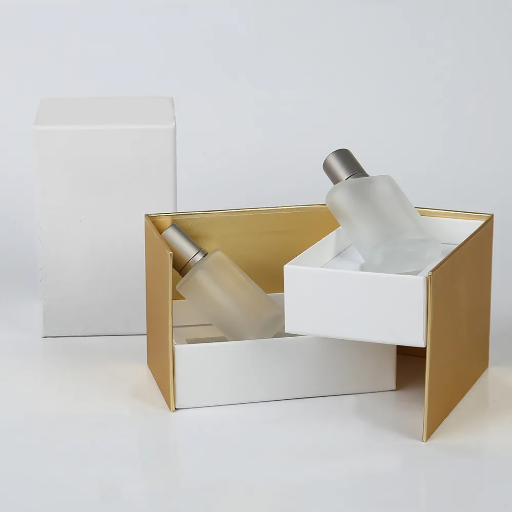
Three primary trends are expected to factor into shaping the future of green packaging for fragrances:
1. Innovation in Biodegradable Materials
Innovative biodegradable materials-based packaging, such as plant-based polymers, is widely accepted. These materials that readily decompose cause less environmental harm and do not affect product quality.
2. Refillable and Modular Designs
The brands are also well aware of refillable packaging systems and are making every effort to minimize waste. The fragrant containers are kept separate from the reusable outer casings, providing a simple solution that balances sustainability and beauty.
3. Advanced Recycling Technologies
New recycling technologies, such as chemical recycling, offer a different approach to packaging recycling and also reuse the most complex parts of packaging. These steps not only make packaging life cycles completely circular but also align with universal sustainability policies.
Brands that follow these trends are future-oriented leaders in the transition to sustainable, eco-friendly packaging solutions.
How Brands Are Adapting to Eco-Friendly Practices
Brands well receive eco-friendly practices because they align with more and more companies that have learned to choose and use materials that are environmentally friendly in production and that consider overall environmental conditions. In most cases, the priority is shifting to biodegradable or renewable materials that also have these properties, as well as using plant-based plastics, paper, and compostable fibers to replace traditional ones made from oil. Another way to be greener is through energy-efficient manufacturing technologies that help reduce carbon emissions during production.
Brands are reported to follow the loop with heavy investment in the current developing closed-loop system, where materials are, in the first place, reclaimed, then recycled, and finally reused, contributing to minimized waste and, therefore, the lengthening of the product’s life cycle. This phenomenon is visible, especially in the fashion industry and consumer goods sector, both of which have seen substantial momentum in launching programs for the collection and packaging of materials containing recycled content.
Moreover, many companies are conducting life cycle assessments (LCAs) to identify and mitigate critical environmental impacts in their supply chains. These evaluations push them to adopt green purchasing practices, such as supporting suppliers that adhere to acceptable labor laws and environmental regulations. The brands that make these changes not only lower their ecological footprint but also appeal to consumers obsessed with the green environment.
Predictions for the Future of Sustainable Packaging in Perfume
In the fragrance industry, the adoption of sustainable packaging in the near future will depend on innovations, new regulations, and consumers’ environmental preferences. Next-generation materials, such as biodegradable polymers and other plant-based alternatives, are seen as the best candidates for replacing single-use plastics, which are driving the industry toward a more circular packaging model. On top of that, modular and repeatable products that consumers may want to combine with the package are likely to be widely adopted, which means they will reduce waste by reusing components.
The legal environment will also change; it is expected that there will be stricter regulations on packaging manufacturing, recycling rates, and the sources of materials in the future. This alteration means that companies will have to implement closed-loop systems and maintain transparent supply chains, enabling them to comply with the regulation while simultaneously lessening environmental impact. Besides this, consumer attention is increasingly focused on sustainable products, which will push brands to adopt carbon-neutral and even carbon-negative practices. The very measures might include putting carbon footprint information on the pack and using renewable energy in production.
According to the data, companies that focus on eco-certifications and collaborating with programs that reduce waste will not only create a greener planet but also become more competitive in a very volatile market. The use of sustainable packaging in the fragrance sector will have a major impact on the industry, with buying behavior and environmental concerns as two closely connected elements.
Reference Sources
Innovative Approaches to an Eco-Friendly Cosmetic Industry
Key Findings: This paper discusses the growing trend of using recyclable or biodegradable plastics and reusable packaging in the cosmetic industry to meet consumer expectations for sustainability.
Sustainable Beauty: A Conceptual Paper of How Eco-Friendly Buying Habits Drive Demand
Key Findings: This research explores how ethical considerations, environmental awareness, and eco-friendly buying habits influence consumer demand for sustainable beauty products, including perfume packaging.
Frequently Asked Questions (FAQs)
What Are Eco-Friendly Packaging Options for Sustainable Perfume?
Numerous aspects of perfume boxes significantly impact the environment, and their selection can help conserve our planet’s primary resource. Many companies go green by using recyclable, eco-friendly boxes. This is very important, as the ingredients come from sustainable sources, and it is only the manufacturer, not outsiders, that issues waste. Online shopping, especially, has become a threat to the environment, with so many items wrapped in plastic and cartons. In the perfume industry, this is a big issue that people often overlook, as they want perfume at a cheaper price rather than considering the packaging’s side effects.
How Does Sustainable Perfume Packaging Impact Brand Image?
Promoting environmentally friendly fragrance packaging can significantly boost a brand’s image by highlighting its dedication to eco-consciousness. It is expected that when environmentally friendly fragrances are introduced in the packaging, a large number of customers will be attracted to the shop. This shift to eco-friendliness will not only benefit the brand but also make it the most sought-after in the fragrance industry. The brands can go green by wrapping their products in biodegradable materials and providing kits that are completely environmentally safe. It is the final goal, and a very competitive brand, if it continuously incorporates sustainable operating procedures into the line, will be placed on a higher pedestal in the market.
What Are the Future Trends in Sustainable Perfume Bottle Packaging?
Fragrance sustainable packaging will spearhead the perfumery. Wood, glass, and many other materials will remain key materials in the packaging market. The packaging will be both sustainable and beautiful; sometimes it will clearly show eco-friendliness, and sometimes it will be hidden until explained to consumers. This step becomes essential for companies desiring to conceive a cleaner, greener world and satisfy today’s consumers’ very environmentally friendly needs since the smell and the eco-friendly aspects are the paint and drawing the fragrance wears.
How Can Fragrance Packaging Solutions Be Made More Sustainable?
To make fragrance packaging solutions more up-to-date, brands need to pay close attention to the following key areas. First of all, they have to go for environmentally friendly materials like glass and biodegradable components that are not only recyclable but also help reduce waste in the long run. The possibility of reusing or refilling packaging can lead to single-use packaging use being cut down massively as well. Moreover, fragrance brands can collaborate with packaging companies that focus on eco-friendly practices to ensure their products align with environmental responsibility. These strategies, if adopted by brands, not only will help them be proactive toward eco-friendly consumers but also contribute to the fragrance industry being a more sustainable sector.

